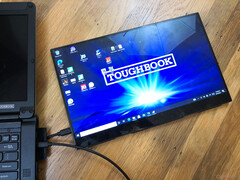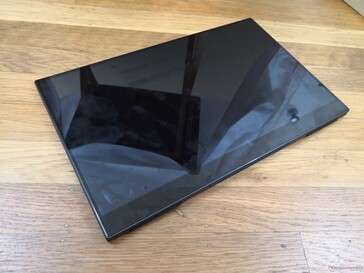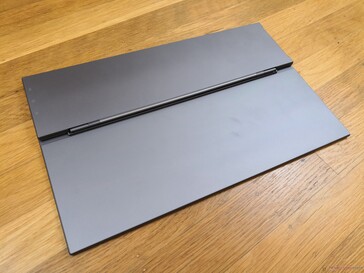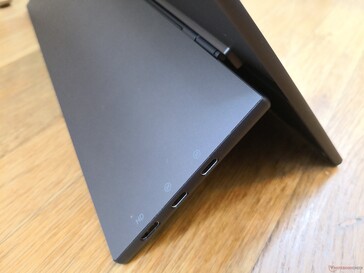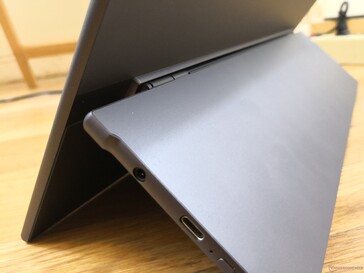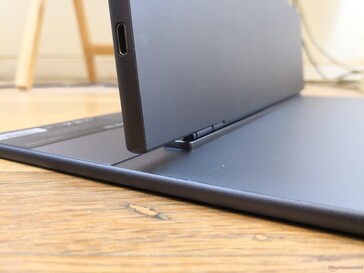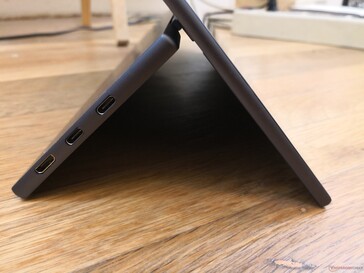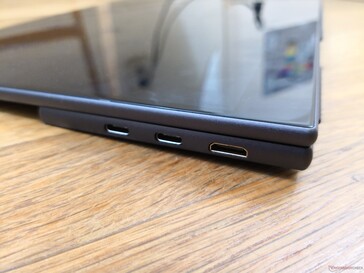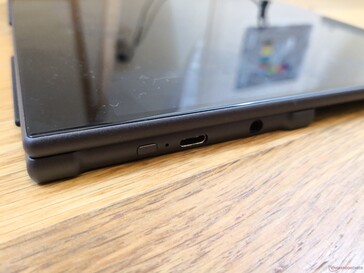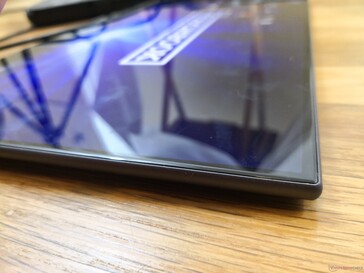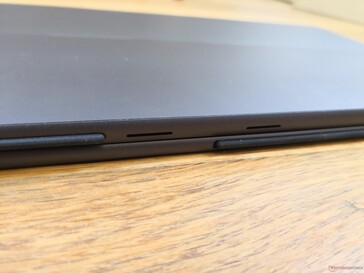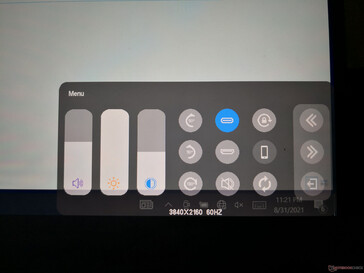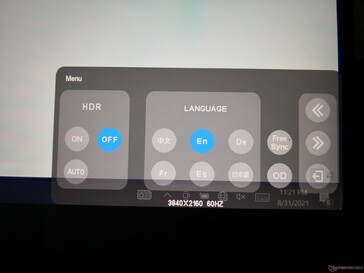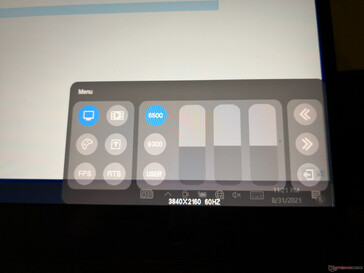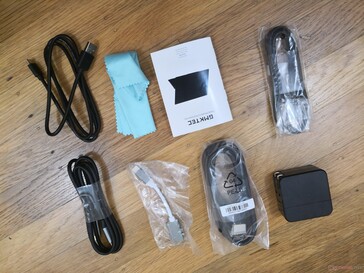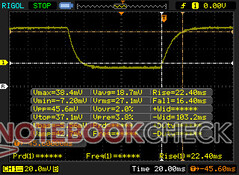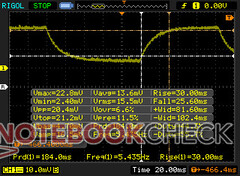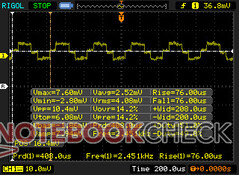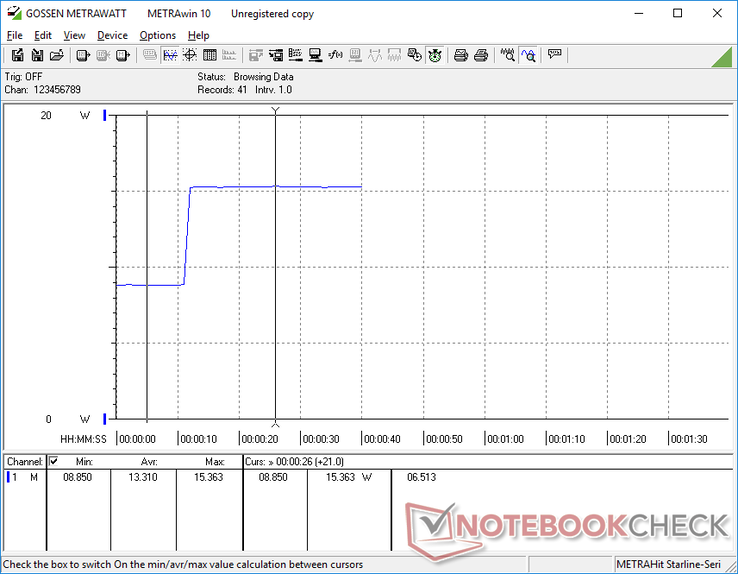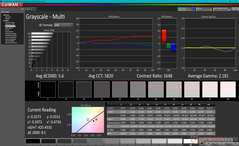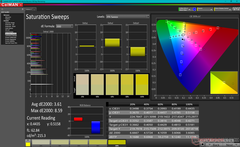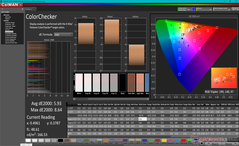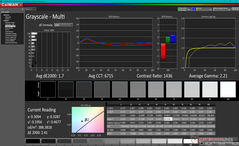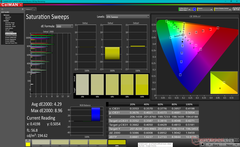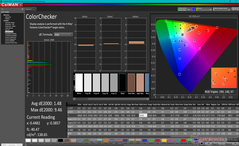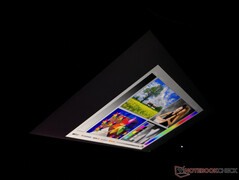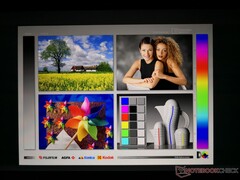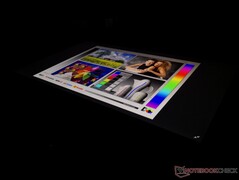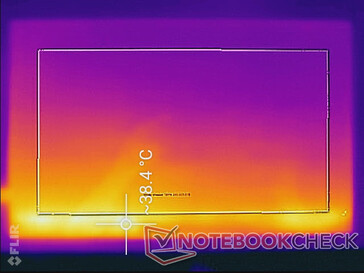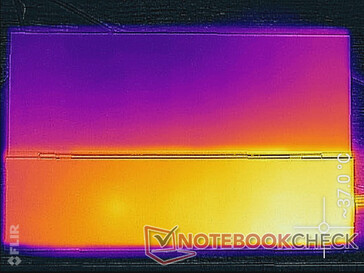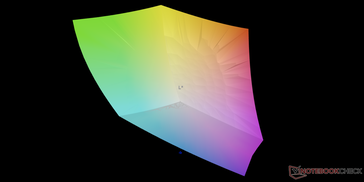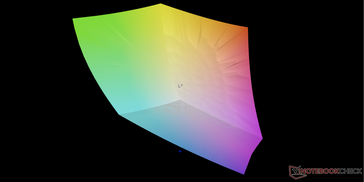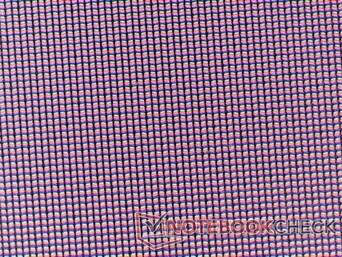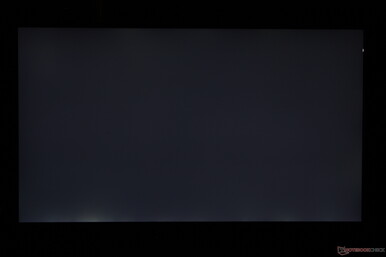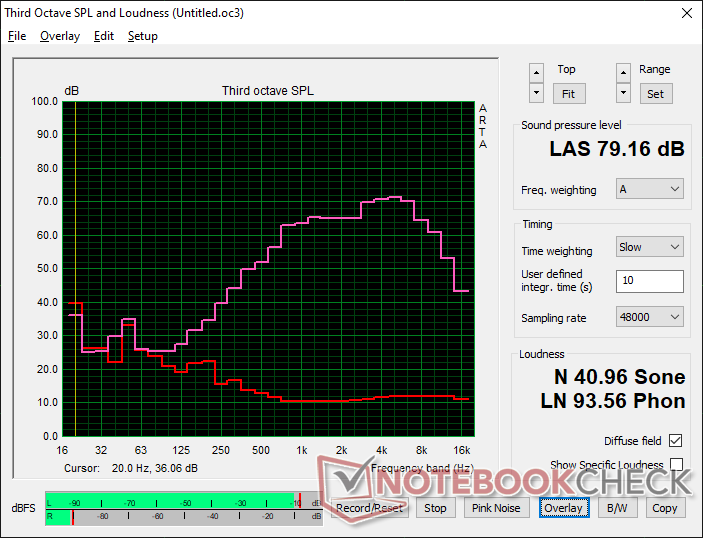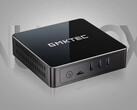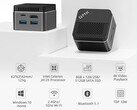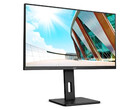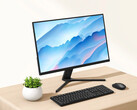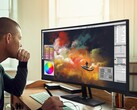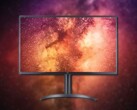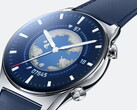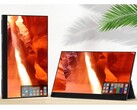(September 2, 2021: Corrected the title to say 15.6-inch instead of 14-inch as the KD2 is a 15.6-inch monitor.)
After launching the original KD1 portable monitor late last year, GMK is now ready to ship the KD2 portable monitor with significant improvements across the board. The monitor and carrying sleeve are currently on sale together for $409 USD after applying the coupon code '$90OFFKD2-NBC-BTS' on the official GMK retail store.
The manufacturer has sent us a sample for our impressions and the changes from last generation's model are immediately noticeable. The edge-to-edge glass, for example, now covers the entire front of the unit instead of only a portion while the rounded "2.5D" edges add a more modern aesthetic. Port options remain the same gen-over-gen, but weight (993 g vs. 822 g) and dimensions (354 x 222 x 14 mm vs. 321 x 208 x 12.6 cm) are actually slightly heavier and larger, respectively, due to the use of more glass and the larger bottom bezel. It's a fair tradeoff for the stronger and more rigid build of the KD2.
The full retail specifications of the KD2 can be found here and the Amazon product page here.
| Pros | Cons |
| + Sturdier build quality than the KD1 + Rigid kickstand and hinges + Full sRGB and AdobeRGB coverage + native 4K resolution with IPS touchscreen + Can operate with no dedicated power cable + Easy-to-use touchscreen OSD + High quality and color-accurate panel after calibration | - Slightly larger and heavier than the KD1 - Mini-HDMI port instead of full-size HDMI - Color and grayscale tweaks recommended out-of-the-box - Slow black-white and gray-gray response times - PWM present on brightness level under 31 percent - Relatively weak integrated speakers - Slight-moderate uneven backlight bleeding - Carrying case is sold separately by default - 60 Hz refresh rate limit |
| |||||||||||||||||||||||||
Brightness Distribution: 91 %
Contrast: 1153:1 (Black: 0.36 cd/m²)
ΔE ColorChecker Calman: 5.93 | ∀{0.5-29.43 Ø4.78}
calibrated: 1.48
ΔE Greyscale Calman: 5.6 | ∀{0.09-98 Ø5}
100% AdobeRGB 1998 (Argyll 3D)
100% sRGB (Argyll 3D)
92.3% Display P3 (Argyll 3D)
Gamma: 2.18
CCT: 5820 K
| GMK KD2 Portable Monitor 15.6", 3840x2160 | GMK KD1 Portable Monitor 14", 3840x2160 | Vissles Monitor 15.6 15.6", 1920x1080 | C-Force CF011S RTK2A3B, , 15.6", 1920x1080 | Auzai ME16Z01 Portable Monitor 15.6", 1920x1080 | |
|---|---|---|---|---|---|
| Display | -20% | -45% | -51% | -42% | |
| Display P3 Coverage (%) | 92.3 | 69.6 -25% | 47.33 -49% | 41.08 -55% | 48.53 -47% |
| sRGB Coverage (%) | 100 | 94.4 -6% | 66.4 -34% | 60.3 -40% | 72 -28% |
| AdobeRGB 1998 Coverage (%) | 100 | 71.1 -29% | 48.6 -51% | 42.44 -58% | 50.2 -50% |
| Response Times | -15% | 18% | 11% | 33% | |
| Response Time Grey 50% / Grey 80% * (ms) | 55.6 ? | 62 ? -12% | 41.2 ? 26% | 41.2 ? 26% | 38.8 ? 30% |
| Response Time Black / White * (ms) | 38.8 ? | 45.6 ? -18% | 35.2 ? 9% | 40.8 ? -5% | 25.2 ? 35% |
| PWM Frequency (Hz) | 2451 ? | 5000 ? | 1000 ? | 1000 ? | 201.6 ? |
| Screen | -9% | -59% | -57% | -86% | |
| Brightness middle (cd/m²) | 415.1 | 325.3 -22% | 248.1 -40% | 205 -51% | 300.7 -28% |
| Brightness (cd/m²) | 412 | 316 -23% | 237 -42% | 193 -53% | 267 -35% |
| Brightness Distribution (%) | 91 | 82 -10% | 91 0% | 88 -3% | 77 -15% |
| Black Level * (cd/m²) | 0.36 | 0.3 17% | 0.28 22% | 0.25 31% | 0.66 -83% |
| Contrast (:1) | 1153 | 1084 -6% | 886 -23% | 820 -29% | 456 -60% |
| Colorchecker dE 2000 * | 5.93 | 4.75 20% | 6.85 -16% | 8.01 -35% | 10.26 -73% |
| Colorchecker dE 2000 max. * | 8.64 | 8.09 6% | 20.8 -141% | 19.93 -131% | 22.93 -165% |
| Colorchecker dE 2000 calibrated * | 1.48 | 2.19 -48% | 5.69 -284% | 4.3 -191% | 5.05 -241% |
| Greyscale dE 2000 * | 5.6 | 6.2 -11% | 5.8 -4% | 8.3 -48% | 9.5 -70% |
| Gamma | 2.18 101% | 2.31 95% | 2.34 94% | 2.1 105% | 1.51 146% |
| CCT | 5820 112% | 6691 97% | 6402 102% | 6106 106% | 8200 79% |
| Color Space (Percent of AdobeRGB 1998) (%) | 65.4 | 42.8 | 38.7 | 45.8 | |
| Color Space (Percent of sRGB) (%) | 94.6 | 65.8 | 59.8 | 71.5 | |
| Total Average (Program / Settings) | -15% /
-12% | -29% /
-45% | -32% /
-46% | -32% /
-59% |
* ... smaller is better
Interestingly, the maximum brightness we're able to reach is 432 nits when HDR is disabled which affirms the manufacturer claim of 400 nits. When HDR is enabled, however, we're only able to measure a maximum of 463 nits compared to the manufacturer claim of HDR600 or 600 nits.
GMK doesn't advertise the response times of the KD2 for good reason: they're very slow to put things lightly. Users will notice a lot of ghosting when playing modern 3D games meaning we recommend 2D games for a better experience. The latest displays with 3 ms or 5 ms response times are an order of magnitude faster than what the KD2 is capable of.
Pulse-width modulation or screen flickering is present when the brightness is set to 30 percent or lower.
The display will consume just over 15 W at most when the brightness is set to maximum. The difference between minimum and maximum brightness is around 8 W. If you want to the exploit the full brightness of the display, then you'll have to make sure that your power source can provide at least 20 W.
Color temperature is overly warm when set to the default settings. Calibrating the panel with our X-Rite colorimeter raises the color temperature from 5820 to 6715 while improving grayscale and colors significantly to deltaE levels of under 2. Solid colors strangely remain much more inaccurate against the AdobeRGB standard which suggests that additional fine-tuning via the onscreen settings menu may be required.
Color space covers all of AdobeRGB compared to only 71 percent on last year's KD1. Image quality is excellent when compared to cheaper portable monitors like the Vissles or Auzai, but colors don't pop as much as they would on a high-end smartphone since the overlying glass is on the thick side.




